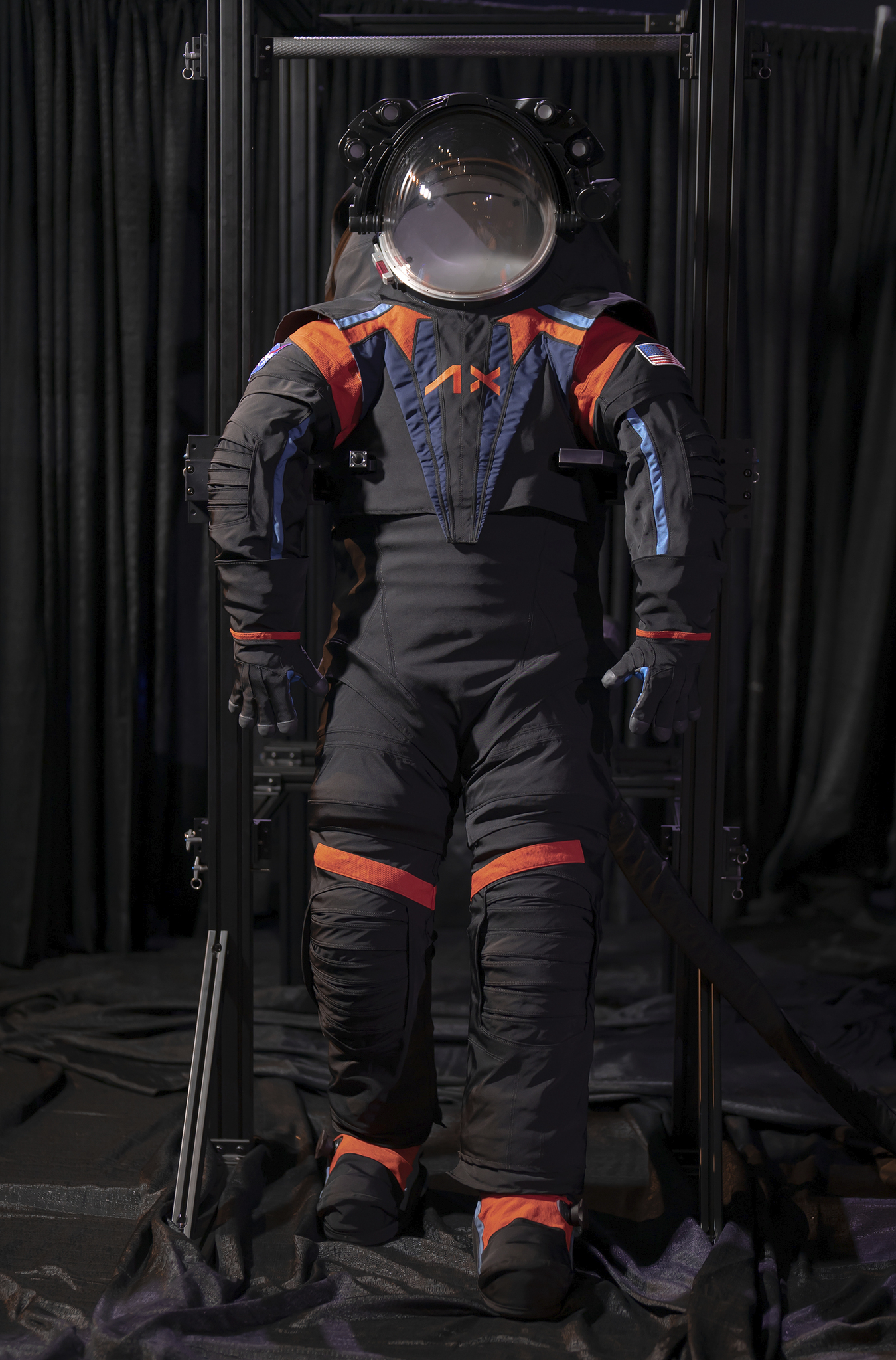NASA has just unveiled the new spacesuit that will be worn during Artemis III, an upcoming mission to put the first woman and person of color on the moon’s surface — and it’s a huge upgrade from the suits worn by the Apollo-era moonwalkers.
Out with the old: Spacesuits are arguably the most important piece of equipment used during a crewed mission to the moon — not only do they provide astronauts with oxygen and water, they also protect them from lunar dust, solar radiation, and extreme temperatures.
“These are suits that are at the end of their useful life.”
Pablo De León
The spacesuits currently used by NASA astronauts during ISS spacewalks aren’t in nearly good enough shape for its planned moon missions, though — just last year, NASA had to temporarily suspend its routine ISS spacewalks because one of them was leaking water.
“These are suits that were originally designed for the space shuttle program,” Pablo De León, director of the Human Spaceflight Laboratory at the University of North Dakota, told CNBC. “Due to the lack of funding, NASA kept working on them, kept repairing them and maintaining them for all these many years. But really, these are suits that are at the end of their useful life.”
In with the new: In September 2022, NASA awarded Texas-based aerospace company Axiom Space a $228.5 million contract to develop new spacesuits in time for the Artemis III mission, which will see NASA land crew on the moon as soon as 2025.
Using a prototype NASA unveiled in 2019 as a foundation for its design, Axiom has now unveiled its spacesuit prototype, which it calls the Axiom Extravehicular Mobility Unit (AxEMU).
Space drip: Aside from not being 40+ years old, Axiom’s AxEMU has several advantages over NASA’s current spacesuits, including the incorporation of new technologies and safety features.
Thanks to a combination of soft and hard joints, astronauts should also have an easier time moving in the new suits than the old ones — during the unveiling, Axiom engineer Jim Stein performed a few squats, lunges, and twists in the suit to demonstrate that increased mobility.
The new spacesuits are also designed to accommodate a wider range of bodies. This could help NASA avoid issues like the one it faced in 2019, when it didn’t have enough medium-sized suits prepped for what was supposed to be the first all-female ISS spacewalk.

Looking ahead: One thing about the new spacesuits that won’t be different from the old ones is their color. While the AxEMU prototype unveiled by Axiom was black, the suits used on the moon will be white, as that will allow them to reflect more sunlight to help keep astronauts cool.
The black facade was only in place to conceal proprietary elements of the design, specifically from Collins Aerospace — NASA has also awarded that company a $97.2 million contract to design new spacesuits for the ISS, and it plans to rent the suits from either company as needed.
“The beauty of this contract is the functional requirements for these two suits are very, very close,” Lara Kearney, manager of NASA’s Extravehicular Activity and Human Surface Mobility Program, told CNBC. “So at any given time, we could ask either of those contractors to actually start working on the other … platform.”
By renting its new spacesuits, rather than owning them, NASA can avoid the issue of having to use suits that are past their prime. The private companies, meanwhile, will be able to build and maintain spacesuits based on the same design for other customers — potentially helping put the first private astronaut on the moon.
We’d love to hear from you! If you have a comment about this article or if you have a tip for a future Freethink story, please email us at [email protected].






